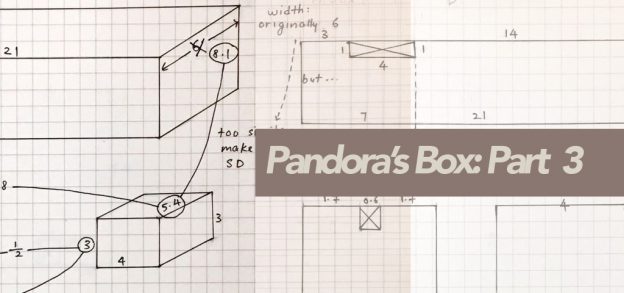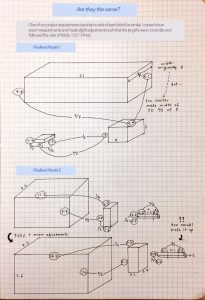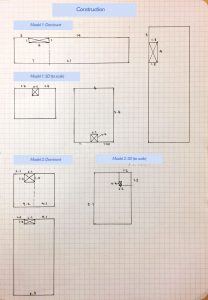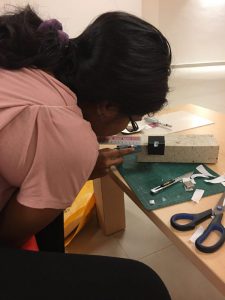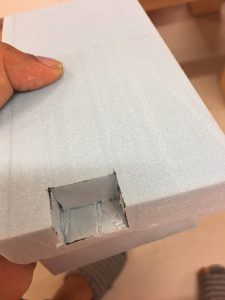The technical side of things
With our class presenting our sketch models to one another, one word I heard a lot was “same”. To avoid this sameness in my model, I did pretty laborious technical drawings where I measured every side and adjusted ratios to reflect good proportion.
I also needed to know exactly where I would need to cut my blocks such that I could wedge the SD and SO in. And so I made another technical drawing, with the accuracy down to 0.05cm.
These gave me a great peace of mind – knowing I wasn’t just roughly estimating a third or a half. It also helped me to visualize the sculpture as a whole, and made me more comfortable with 2D sketches of 3D models.
Behind the scenes
Here’s me pasting some textured paper on a foam block on zen mode, and some satisfyingly crisp edges.
